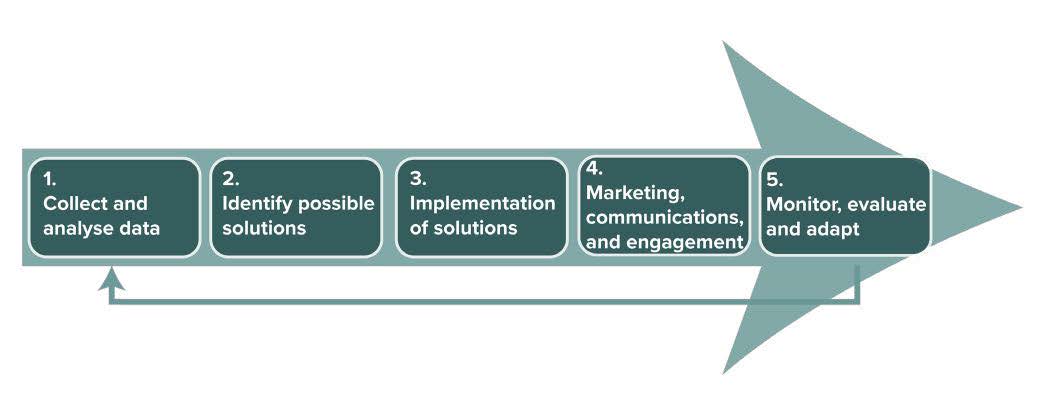
Helping to support the Travel Demand Management action plan
This week the Department for Transport released funds to help Local Authorities get children back to schools, and with that, their ambition to alongside their new aim for at least 50% of education related trips under two miles that previously took public transport to shift to cycling and walking.
As part of this, the DfT has also released a Travel Demand Management toolkit. This is a great tool to help Local Authorities strategically plan for the change in all of our travel needs in preparation for the start of a new school term.

DfT/Motts IP
The toolkit outlines 5 stages for creating an effective TDM action plan, as you can see in the image above.
The first stage as always is to collect and analyse data, which will help you move to the next stage which is identify the most suitable solutions for each school. Many of us have learned some valuable lessons from the rapid response measures that have been put in place over the lockdown period, and the unexpected benefits and consequences of various solutions, but above all else; one size does not fit all.
Our Active Streets Assessment tool is already being used across Berkshire to help prepare for the return to school in September by identifying areas suitable for school streets programs, areas suitable for cycling and walking promotion, and identifying the safest routes for active travel.
The tool can help you streamline your analysis and give you a whole extra dimension of data to make more informed choices for your possible solutions, help provide measures for monitoring and evaluation, and complete a robust evidence lead TDM action plan to gain political support.



